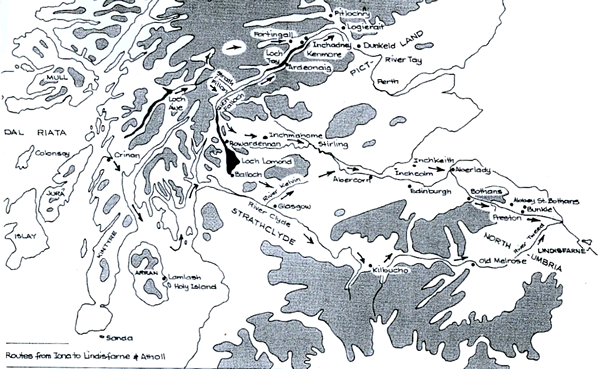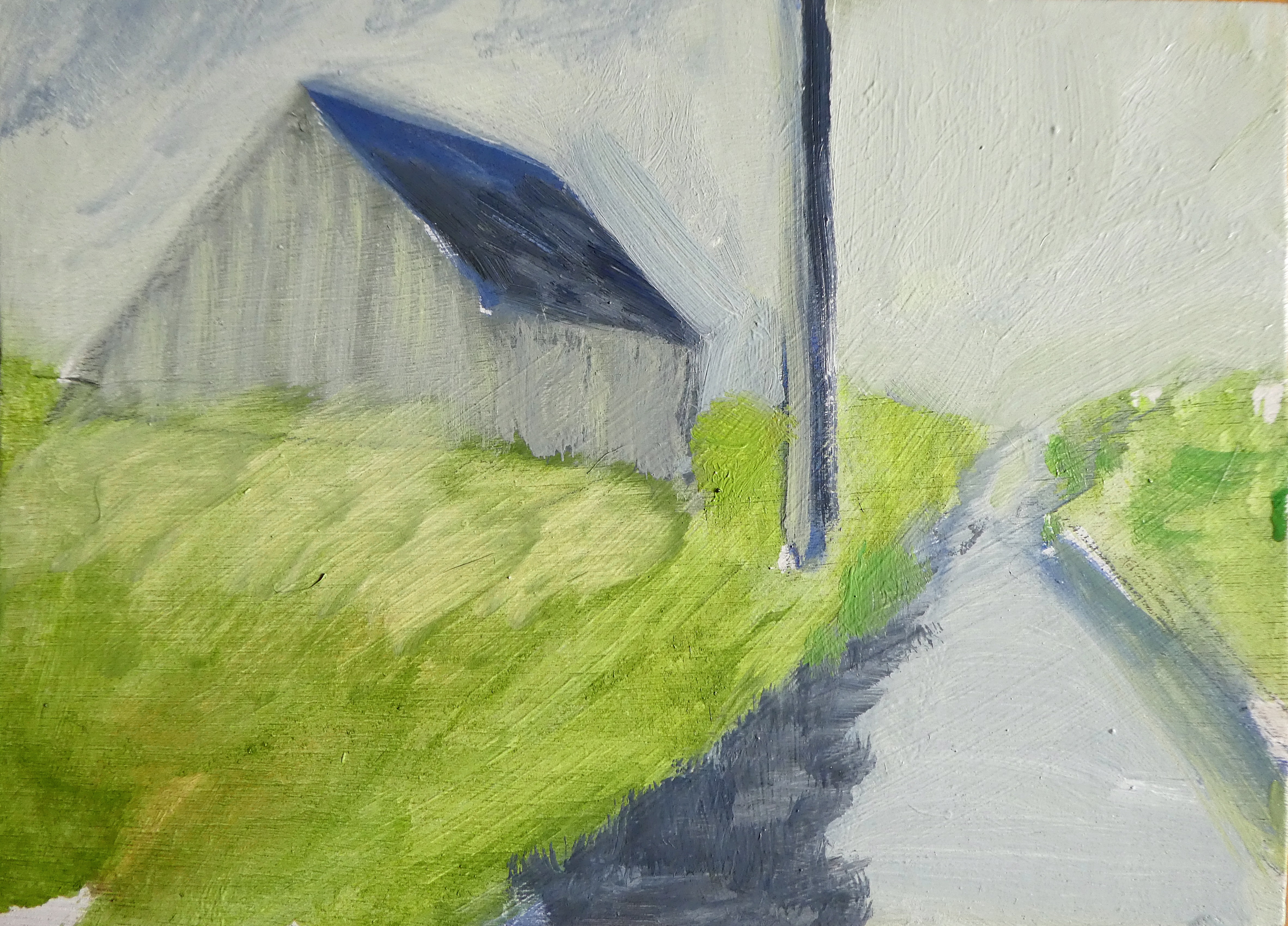Above: Crusader’s Tomb 1. Oil on 14×11″ wood. Rose Strang 2024
I’ve been working on a few sketches of an effigy in the remains of a Carmelite Friary at Aberlady. The painting above (and below so you can click on it) is the first in a series I’ll be creating this year.
- Crusader’s Tomb. Sketch 1. Pencil on paper. Rose Strang 2024
In my last post ‘Start to the year …’ I wrote about what draws me to this particular area. At the heart of my fascination is the crusader’s tomb (featured in the painting above) near Aberlady. It’s quite a difficult place to find and I won’t divulge any secrets about where (publicly anyway!) as I think it’s a sacred, or at least special place.
Despite the fact I’ve been visiting the area since I was a girl, I only discovered the crusader’s tomb in 2021 when I stayed in Aberlady during lockdown. We were astonished to find this fragment of medieval history – the stone effigy of a knight – exposed to the elements. I wondered why it hadn’t been destroyed in the 16th century along with the rest of the Carmelite Friary to which it was attached.
Fragments often remain, but this corner of the friary was left almost untouched, while around it only the foundations and traces of buttresses remained. It seemed like some remnant of forgoten legend so of course my imagination was inspired!
There’s no information on the site, since this is not a public monument, so I searched online where I found contradictory information about the effigy. Some describe it as ‘Bickerton’s tomb’, while others suggest it’s the effigy of David de Lindsay, whose family owned nearby Luffness House in the 13th century. I’m convinced it’s the latter having met someone whose family has owned Luffness House over the last three hundred years, who told me the history of the effigy…
The Story of David de Lindsay.
In the last Crusades (which took place in the Holy Land between the 11th century to early 14th century) David de Lindsay took part and became ill (though apparently not through wounds). He was tended to by monks at a nearby Carmelite Monastery. The Carmelites established their first monastery in the Middle East at Mount Carmel in around 1220 or earlier, so when they tended David de Lindsay it would have been in very early days of the Order.
When de Lindsay realised he didn’t have long to live, he asked the monks if they would send his remains back to his home in Luffness and they agreed. Perhaps this was on condition that de Lindsay set up a Carmelite Friary at Luffness near Aberlady. However the agreement came about, he left instructions and money for his family for a Carmelite Friary to be built near Luffness.
The first records we have of the Friary are (I think) in the late 1200’s, in accounts belonging to David de Lindsay’s son, which describe details of funds for the Carmelite friary at Luffness and instructions for these to be distributed to the poor. Patrons are honoured with a tomb and/or effigy near the altar of churches, and this particular effigy dates to the 1200’s and is placed in the patron’s position on the left of the altar. A shield and sword, held by the effigy are still discernable. It seems most likely it was David de Lindsey.
Today’s painting is the first of several preparatory pieces (you can explore the series as it develops on this link:
I’m living and breathing 13th century culture at the moment – quite literally in the sense that I’m learning to sing some really beautiful 13th century songs!
More on that in my next post …











































































